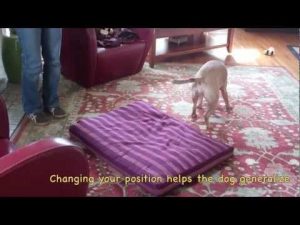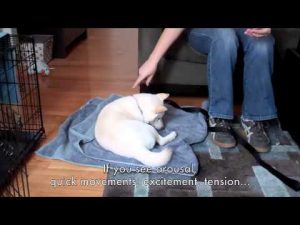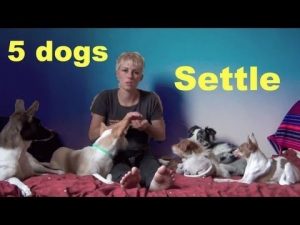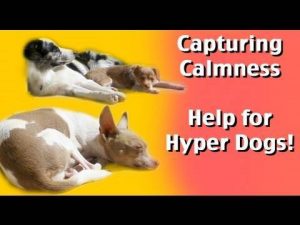Teach Your Dog to Relax!
February 25, 2017
We are really really good at training our dogs to perform specific skills, but what about training the ultimate non-performance skill? Simply hanging out in a content and relaxed way? How are we at training that? Let’s call this the skill of doing nothing.
Below I’ve detailed one skill and one concept that can get your dog to that zen state of mind… Just being and being with you! Let’s get started:
Go to Your Mat
Go to Your Mat is a great skill for teaching a dog to relax in a specific place. Here’s a quick overview:
Step 1. Working within one or two feet of the mat, and your dog at your side, say “Go to your mat” in a cheerful tone of voice, pause, then toss the treat to the mat.
Step 2. As soon as your dog has two or more paws on the mat, treat again on the mat.
Step 3. Tell your dog, “Down.” Give the hand signal or lure it if your dog needs help. When he lies down, treat him. Continue to treat to keep your dog on the mat. After a few seconds, tell your dog, “Okay,” and allow him to get up.
Step 4. Release your dog, and set up to practice again, repeating until your dog begins to go to mat when you say, “Go to your mat,” before tossing the treat.
Now that you and your dog have mastered the basics, begin looking for the following signs of relaxation. All of these signs can be marked with a clicker or verbal secondary reinforcer and rewarded. These are from Laura VanArendonk Baugh’s terrific book Fired Up, Frantic, and Freaked Out: Training Crazy Dogs from Over the Top to Under Control.
Head lowering to mat, chin resting on leg or mat
Tail uncurling or resting on floor
Hip rocking to one side
Hind legs slipping further from body
Hind legs extending behind body (“frog legs”)
Sighing
Blinking and soft eyes
Ears Relaxing
Rolling onto one side
Here are two videos from Sarah Owings on teaching “Go to Your Mat.
There are so many uses for “Go to Your Mat.” Need your dog to be calm when visitors arrive, chill at the vet’s office, relaxed at the local pub? Go to Your Mat can help in all of those scenarios and more!
Next up… Capture Calmness
Is it tough for your dog to relax? Do you feel that your dog has two speeds? One is “floor it” to maximum speed and one is asleep? Try “capturing calmness.” Coined by Emily Larlham, capturing calmness refers to “catching” your dog being calm, and reinforcing it to create a default settle. Videos below:
And finally, don’t forget that dogs do need plenty of exercise (both physical and mental), obedience training, and management to be a civilized family member rather than a wild child. If you’re fulfilling these needs, and add the exercises above, you’ll have a dog that can do a lot with you, and do nothing with you too!
By Susan Marett












